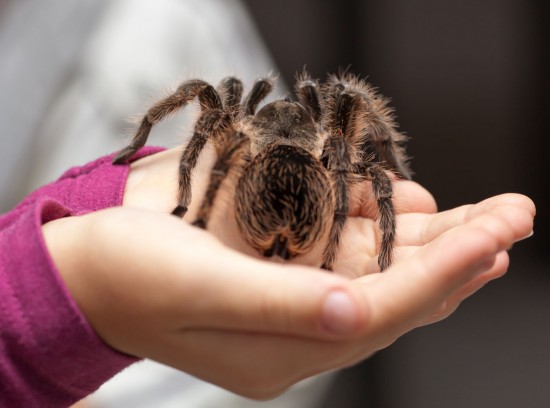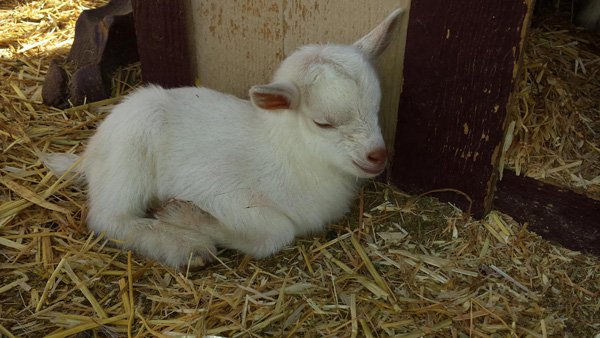
The characters in the typical Hollywood vampire flick, always believe that they have locked themselves safely into a room for the night. Typically, they are rudely disturbed by a bat, which flies through an open window and transforms itself into a monster. This horror imagery that has long been ingrained into the human psyche, means that many people automatically associate bats with physical harm, if not outright terror. However, most lowly bats wouldn't think of coming near humans, and may only wish to nibble on a moth or other small insect for dinner. One type of Chiroptera, which is part of the leaf-nosed bat family, is a type that will feed on blood, and which is also well-known to be parasitic. The range of the Vampire bat, coincidentally, extends throughout all of Central America and is found in Mexico as well.
The vampire bats are called, appropriately enough, 'Desmodontinae'. There are three genii in this group, each with one species, and all of them are hematophagic: the blood of other living things is their main food source. All three share the similar characteristics of having a short muzzle, small ears, and specialized front teeth which are used to cut open flesh. These animals are incredibly well-evolved to hunt for their prized foodstuff and it's been found that the auditory center of their brain is adapted to detect the regular, steady breathing of sleeping animals, which are their primary prey. Strangely, these animals (unlike other Chiroptera which are unable to move on land) can run for brief periods of time.
The most widely seen species is the Common Vampire Bat, seen all over Central and South America. They feed on mammals like tapir in the wild, but prefer domesticated animals like horses and cattle, making them very annoying to ranchers. They hunt during the darkest part of the night and once they've found their prey, they will use their sharp teeth to pierce the skin, peeling away a small flap to expose the vessels underneath. Then, with their specialized grooved tongue, they lick away the blood; an anticoagulant in their saliva prevents clotting.
The Common species is extremely social, exhibiting cooperative behaviors like grooming one another and food sharing. Males will have many mates, and will fiercely defend their harems. They also show alloparenting; the females will adopt orphaned babies and will share the duties of raising the young with other females. It is a misconception that all Vampire Bats carry rabies; it's estimated that only about half of one percent have it. Nonetheless, a bite from a bat should always be examined by a doctor, just in case.
The other two species are not as widely seen, but have similar behaviors to the Common. The Hairy-legged Vampire Bat, has quite good eyesight but poor echolocation abilities, likes the blood of birds over that of mammals, and is mostly found in South America. It is also more solitary, and does not form the same complex social groups as its cousin. The third variety, the White-Winged, is found in Mexico and Argentina. A very accomplished climber of trees, it also enjoys avian prey. They are also more docile and very vocal.
 Keeping Insects And Spiders As Pets - Introduction To Invertebrates
Keeping Insects And Spiders As Pets - Introduction To Invertebrates
 Find Your Dogs With A Cage Free Boarding & Grooming in Ontario
Find Your Dogs With A Cage Free Boarding & Grooming in Ontario
 Dog Daycare Isn't for Everyone
Dog Daycare Isn't for Everyone
 How Long Will It Take For A Dog To Bond With A New Owner?
How Long Will It Take For A Dog To Bond With A New Owner?
 5 Ways To Raise Funds For Your Dog’s Veterinary Care When You Can’t Afford It
5 Ways To Raise Funds For Your Dog’s Veterinary Care When You Can’t Afford It
 Canine Rehoming And Its Failure Rate
Canine Rehoming And Its Failure Rate
 Are My Cats Fighting Or Playing?
Are My Cats Fight
Are My Cats Fighting Or Playing?
Are My Cats Fight
 So You Think You Want A Dog?
So You Think You
So You Think You Want A Dog?
So You Think You
 The “puppy Rules Of Twelve”
The “puppy Rules
The “puppy Rules Of Twelve”
The “puppy Rules
 Sticking To A Regular Routine To Help To Reduce Stress In Your Dog
Sticking To A Reg
Sticking To A Regular Routine To Help To Reduce Stress In Your Dog
Sticking To A Reg
 Spotlight On The West Highland White Terrier - Winner At Crufts
Spotlight On The
Spotlight On The West Highland White Terrier - Winner At Crufts
Spotlight On The
Copyright © 2005-2016 Pet Information All Rights Reserved
Contact us: www162date@outlook.com